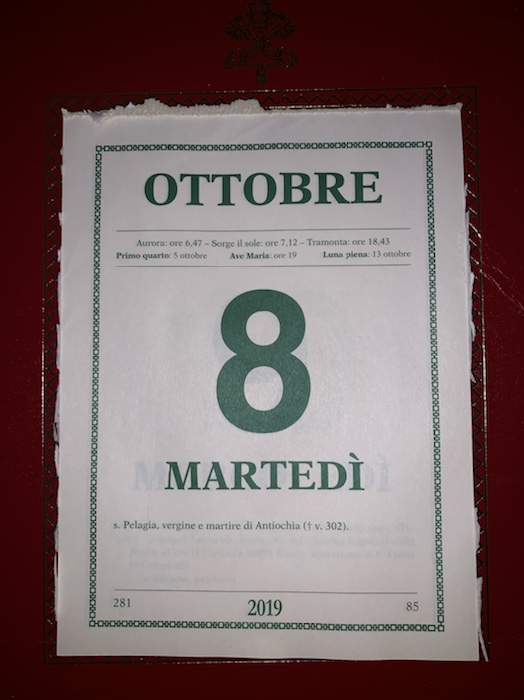
Roman Sunrise was at 6:47 and Colors will sound at 18:43. The Ave Maria is still pinned at 19:00.
The walls of Rome provide both endless fascination and deep contempt for its moronic youth, some of whom seem to have a rather canine need to piddle on the walls with their tiny sprays. Hence, you can find treasures in the inscriptions, many in Latin, and monuments to the piety of generations past, along with the dimwitted scrawls of puerile Roman blockheads.
I would bring back public corporal punishment, perhaps the stocks, for those caught defacing public and private property.
But I digress.
Here’s a sight to exemplify my point.
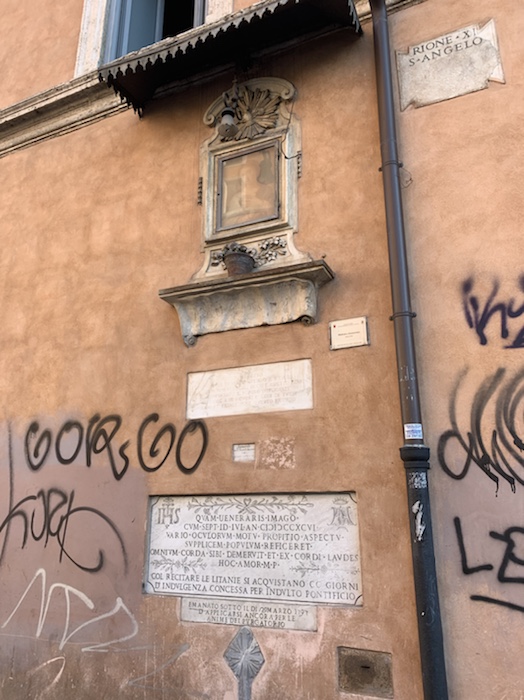
The inscription concerns an indulgence granted for the recitation of litanies and their application to the souls in Purgatory.
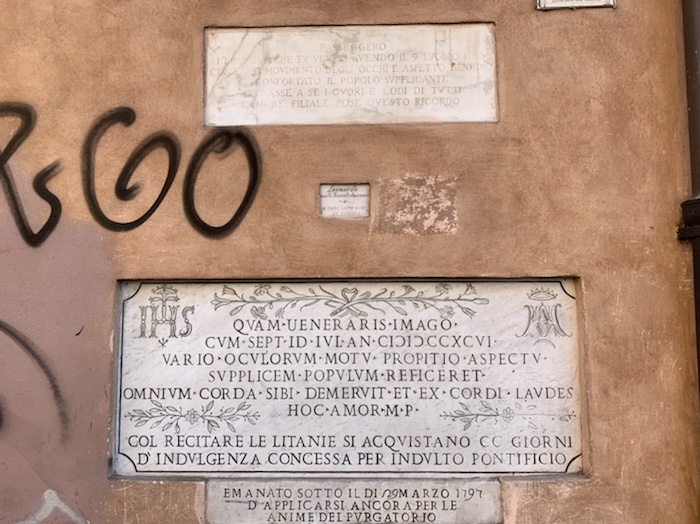
Since it was the Feast of St. Mark, Pope, I headed to the church wherein that Pontiff is interred, indeed, San Marco near the Capitoline Hill.
Of course as you draw near you notice this monstrous thing.
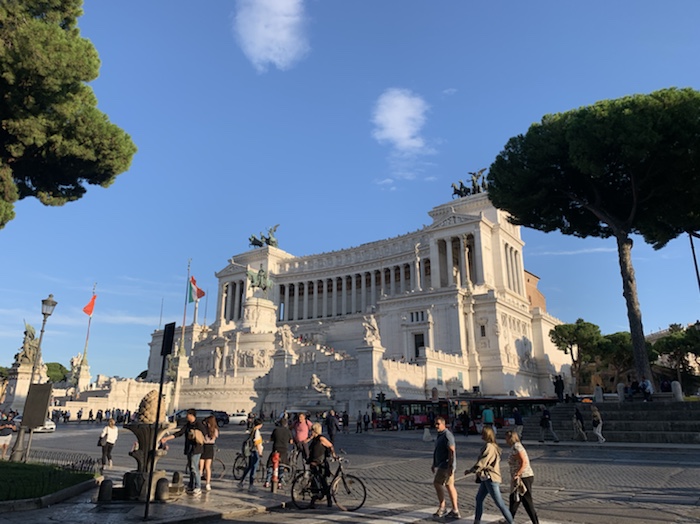
Tucked into the corner is one of the “talking statues”. This is Julia. In days past, these statues were used by various groups to post written opinions on public matters. The statues “talked” to each other. The most famous is Pasquino, near the Piazza Navona.
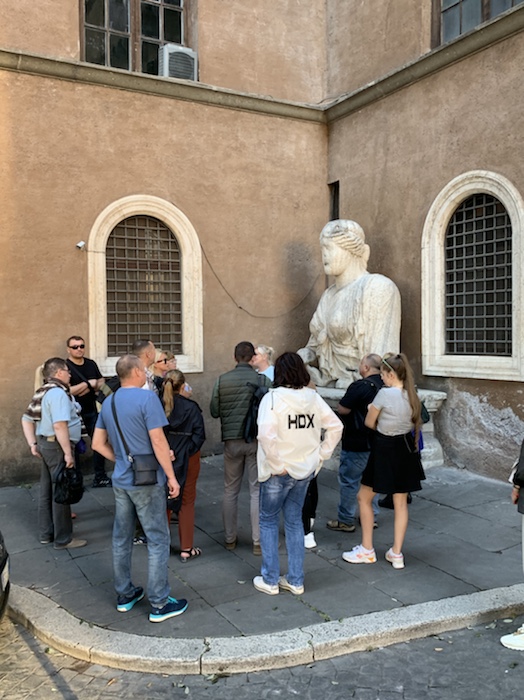
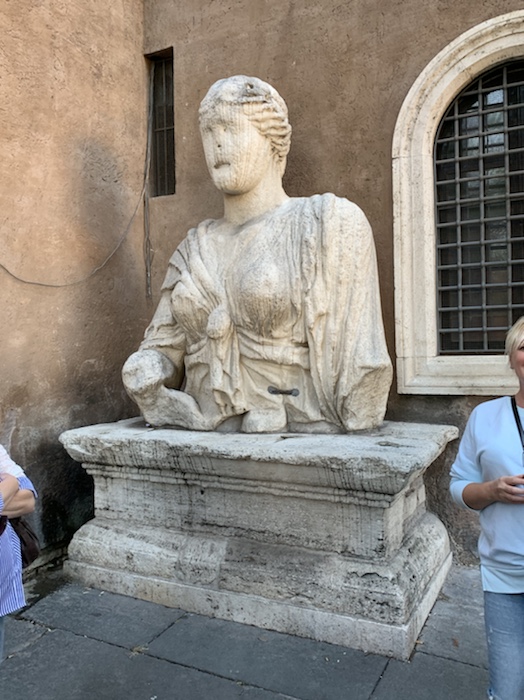
San Marco, named after the Evangelist, and associated with the Venetians. Remember, that Mark’s tomb is in San Marco in Venice.
The facade is reminiscent of Old St. Peter’s from the time of Constantine.
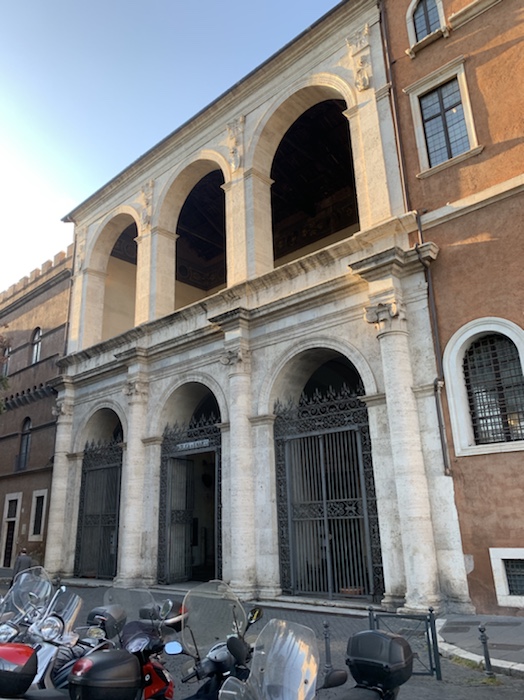
From one angle it is hard to see San Marco, because Mussolini planted the trees in the square specifically to block its view.
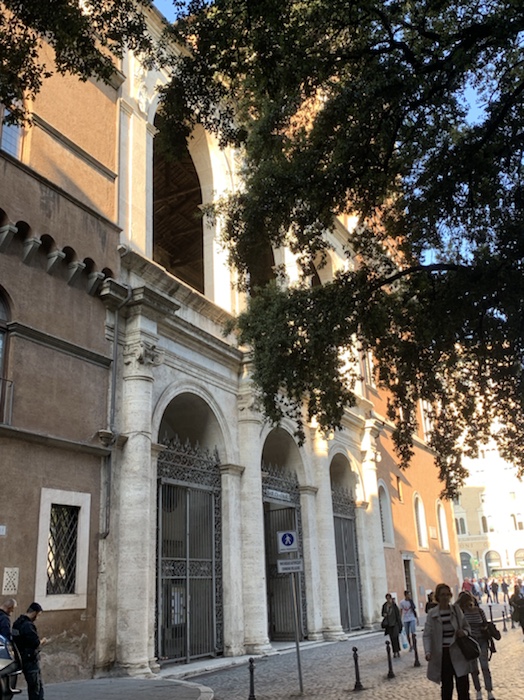
In the loggia we find a pair of medieval lions. Again, think Mark.
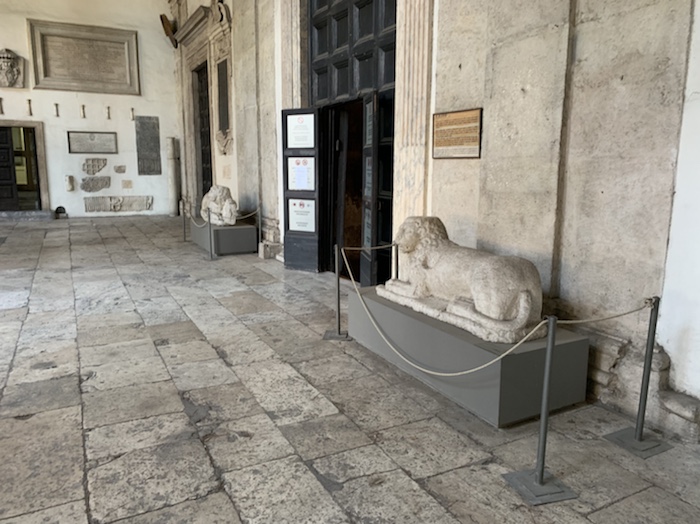
“I’ve got a secret!”
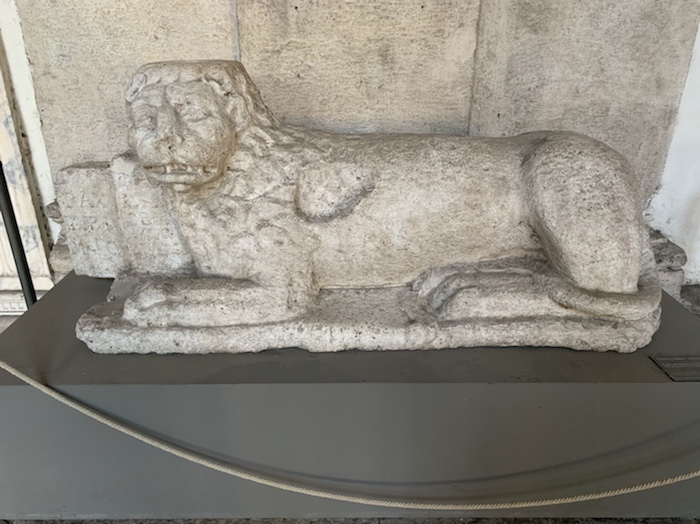
This spiffy well has an inscription which says that anyone who sold water from the well would be “anathema”. Would that that applied to graffiti vandals.
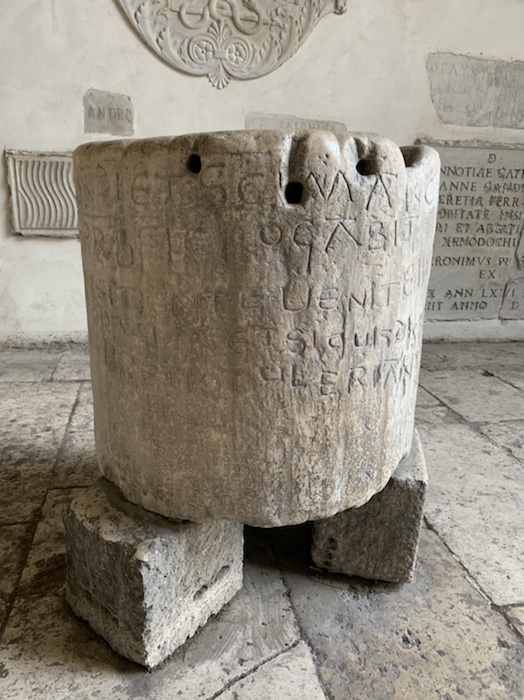
Other traces of our past. Note the sarcophagus relief with the wavy lines, which represent the strigil, an instrument used by athletes to scrape off dirt and oil, thus a symbol of the struggle of the Christian life.
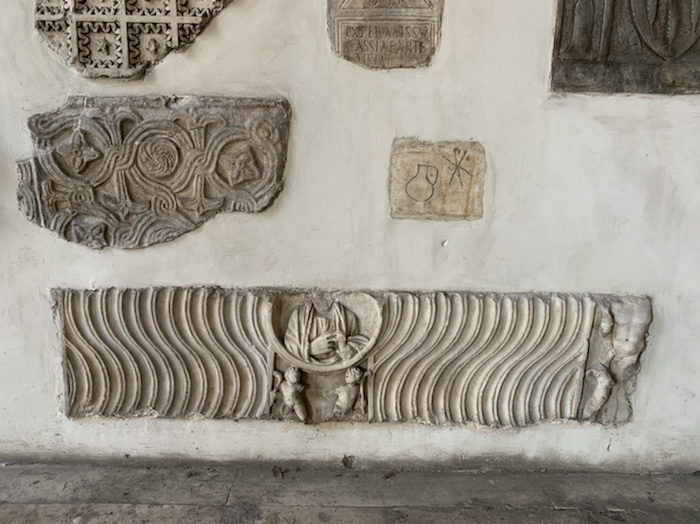
This is quite dear. I take the pitcher to have to do with baptism.
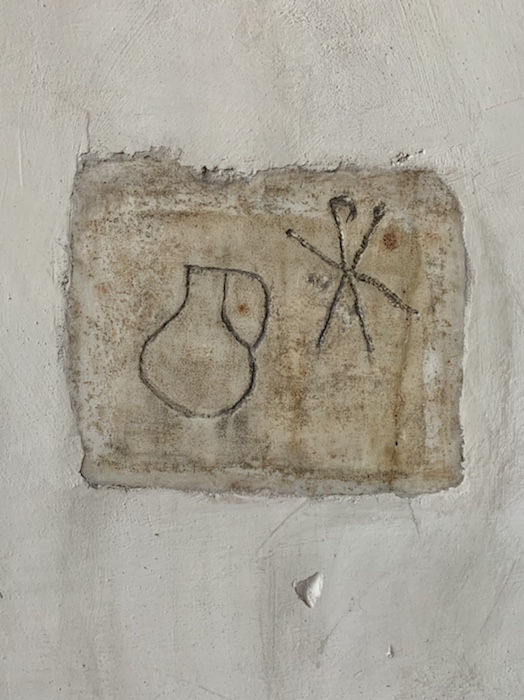
Greek was used by the early Christians in Rome. We put a stop to that! Whew.
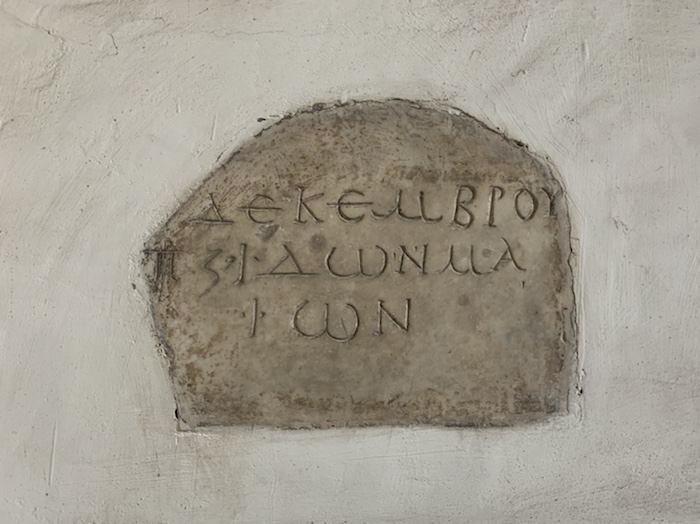
And now a message from Pope Paul.
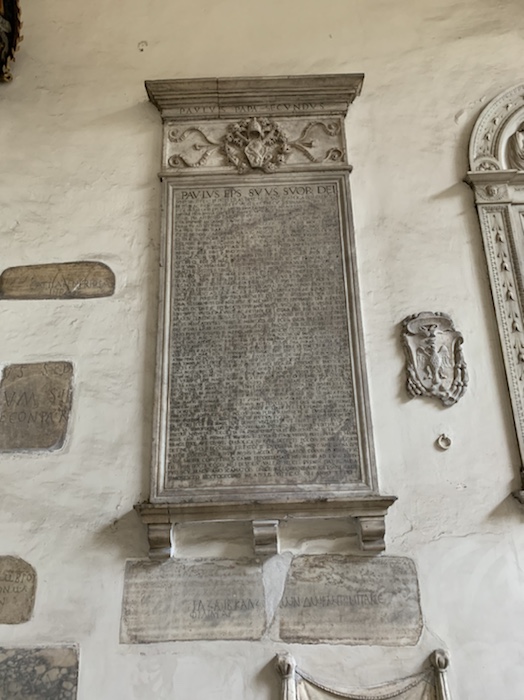
How would you like to untangle this?
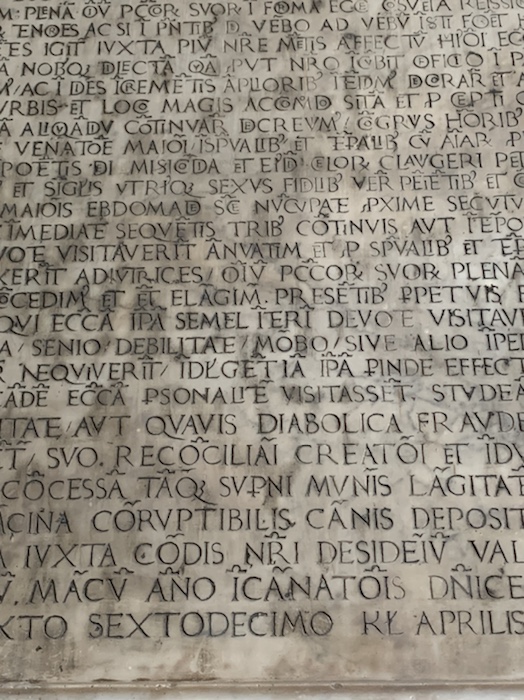
Down we go into the basilica.
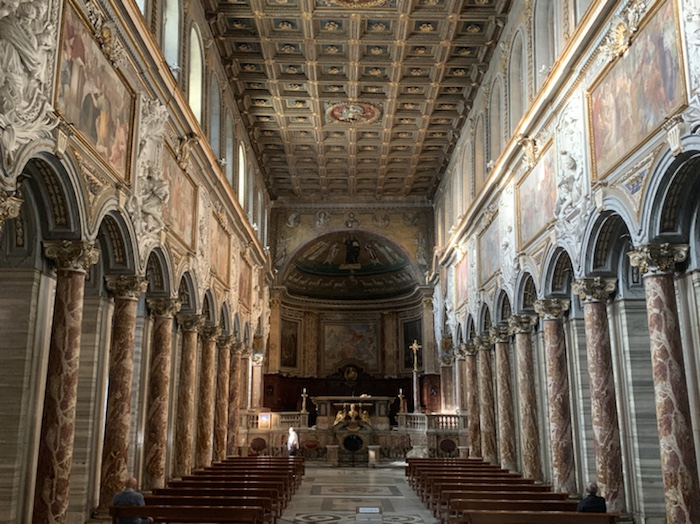
This was a low lying area beneath the looming Capitoline Hill, center of pagan Roman religious life. Many churches sprang from the houses where Christians gathered. This is perhaps a place where Mark the Evangelist lived and worked, thus the dedication. In 336 Pope Mark built this place. Mark was the first Pope not to die a martyr.
The tomb of St Mark, Pope, under the mensa of the altar.
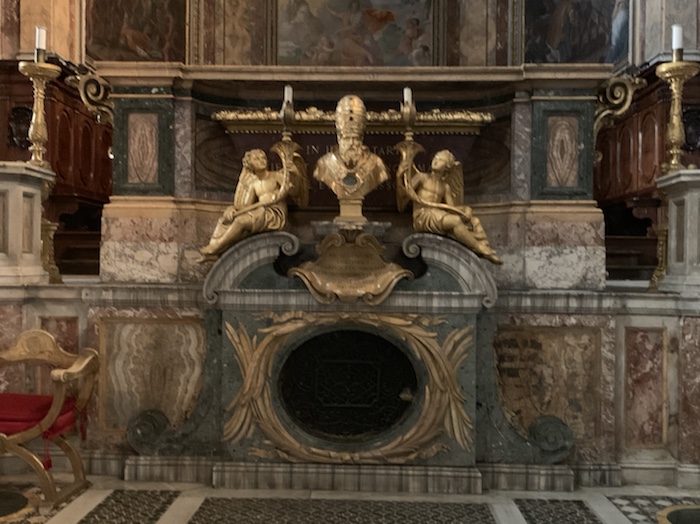
The mosaic in the apse is fabulous. You see the Risen Christ in imperial purple holding the inscription “I am the Resurrection”. Courtly sheep process to the safe pasture by the Lamb. Christ is flanked by Pope Mark, in red with pallium, St. Agnes, so important to the Romans, and St Pope Agapitus (hey! Fr. Pasley!). On the left at Felicissimus and Mark the Evangelist, who is bringing in Gregory IV, alive at the time the mosaic was made, so he has a square halo.
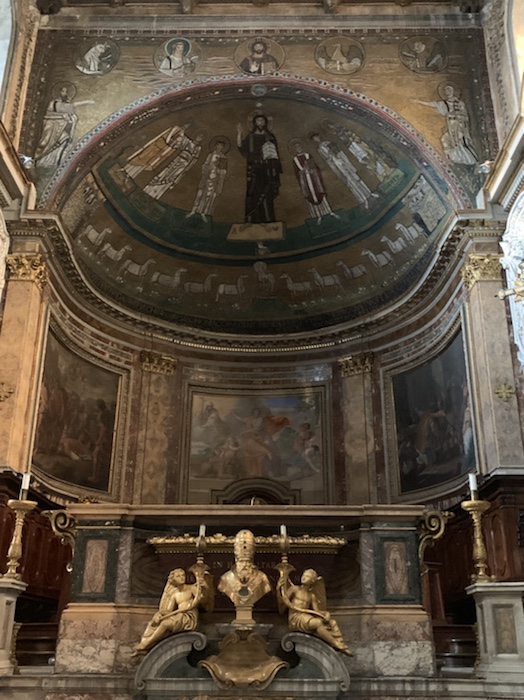
You see the arms of Paul II, who built the portico and this ceiling, which is the oldest wooden ceiling in Rome.
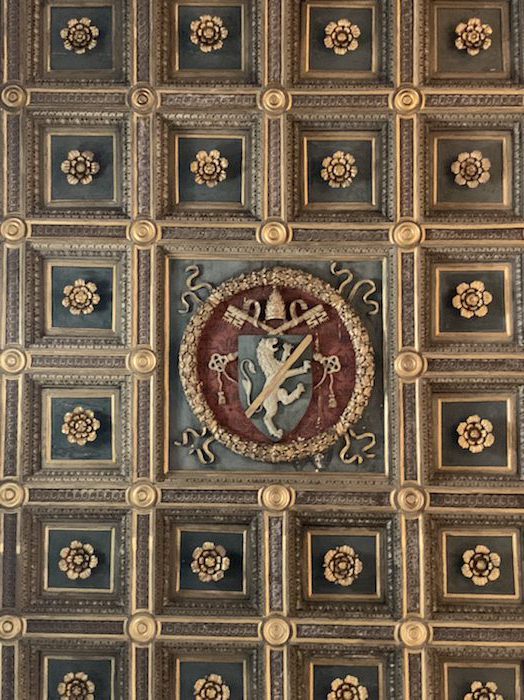
Heading out, stop and have a drink of cold water at one of the special fountains made, again by Mussolini, to symbolize the different regions of the city. They are distinctive.
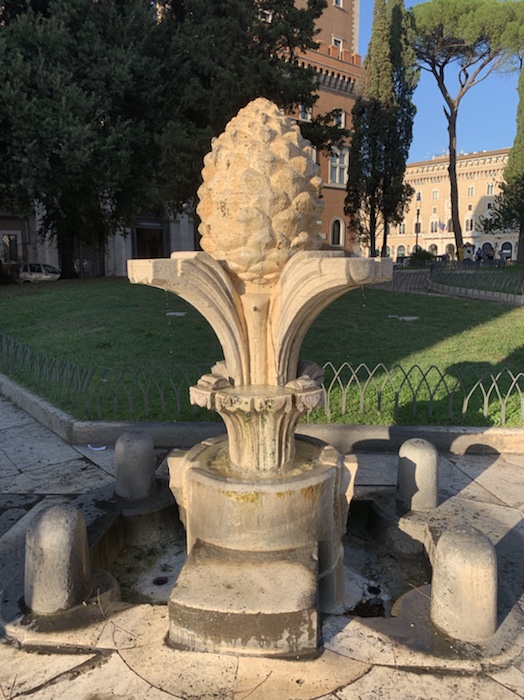
In the evening, I put my head into the Chiesa Nuova for a little bit of a weird “oratorio” in honor of John Henry Newman: readings from his writings punctuated by selections of Bach, involving flute, both solo and orchestral. Well performed, but the choices made no sense to me in that context. Lots of people!
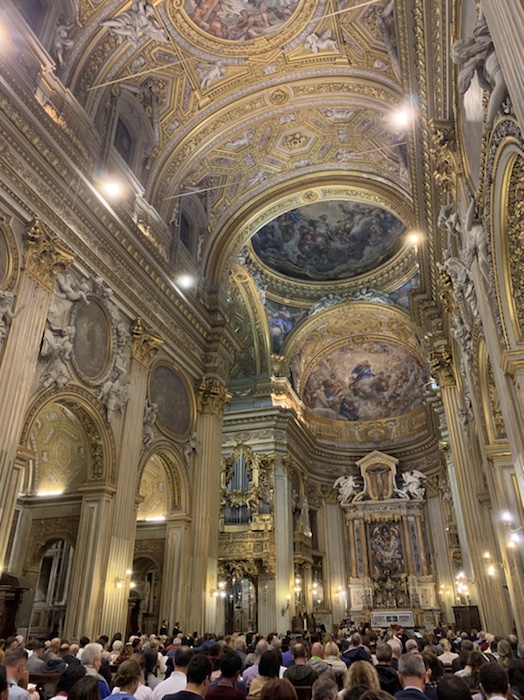
And so my day came to its end. And I still have a cold.
Tonight I will meet with my tailor, defiantly to discuss a new cassock.


































The churches and basilicas are astounding! What priceless treasures that glorify God and every inch is a feast for the eyes and they really do lift the soul. Thank you for sharing your knowledge about so many places in Rome, Fr Z. I wonder how old the relief of the Chi Rho and baptismal jug is – 3rd century?
please good Father, what is the name of “this monstrous thing.” so the non traveled among your readers can look up more about it. Sadly your travels to Rome is more than likely to be as close as I will ever be able to afford going and the internet is a wonderful resource
Thank you
The Egyptian, that’s the “Typewriter.” It’s the National Monument of Victor Emmanuel II, housing Italy’s Tomb of the Unknowns. Because it was ompleted by the fascists, because it is a secular temple at the historic heart of a “holy city” that enshrines the altar della patria of the goddess Rome, and because it is massive neoclassical architecture that would blend right into Washington or Vienna but not at all into Rome, it’s not well-loved by architecture critics.
I have a question, too. The baton sinister on Paul II’s arms would indicate illegitimacy in English heraldry, but that’s obviously not the case in this instance. Does anyone know what its significance is here?
I think it would help clean our church — both physical and spiritual — if the we’d issue indulgences like, “500 days indulgence for cleaning up graffiti of civil structures, 7 years indulgence for cleaning up graffiti of church structures, etc.”
I also would like to know the identity of the “monstrous thing.”
Isn’t San Marco the home of a large number of paintings by Fra Angelico?
And the engraved pitcher next to the chi-rho: couldn’t that signify oil for anointing? That at any rate was what it evoked in my mind.
Hope you feel better, Father, and thank you so much for the visual feast. My eyes devour the sights, as I too will never be there again. It feels like our “home” as Catholics, which is all the more reason that it seems blasphemous to deface these historic walls with graffiti.
Visiting Rome for the first time. Where are you offering mass, Father? While here I am doing my best to put aside the negativity I have felt in the last few years and pray with hope and determination for the leaders of the church while I am right here in the City with them. Prayers for you too Father.
Funny. I never thought of neoclassical architecture as being out of place in Rome, but I suppose I see the point.
I look at the picture in isolation and think, “I wish more architects would put that much effort into their designs in the US,” but not having seen it in person, I don’t imagine I can fully grasp how it fits or does not fit on Capitoline Hill.
I suspected at first glance though, that it had ties to the fascists.
Do the talking statues have Twitter (or Gab, or alternative) accounts?
Mark was not the first Pope not to die a martyr. Neither of his two Constantinian era predecessors – Sylvester and Miltiades (or Melchiades) – died a martyr, although at one point the Roman Martyrology erroneously included the latter in the list of martyrs until recently corrected. Some of the pre-Constantinian popes also probably did not die by the shedding of blood, in imprisonment, on in banishment, although they may have suffered some adversity at an earlier stage in their lives.
“I’ve got a secret.”
That caption brings to mind how St. Mark’s tomb was smuggled out of Egypt to Venice amongst barrels of pork to deter Muslim inspection. A good book is Thomas Madden’s “Enrico Dandolo and the Rise of Venice.”
Sandy: Good point about the graffiti. In Bryan Ward-Perkins’ “The Fall of Rome and the End of Civilization” he devotes a few pages to literacy and the well-preserved graffiti of Pompeii. One piece of graffiti reads: “Wall, I admire you for not collapsing in ruins, when you have to support so much tedious writing on you.”
Speaking of pitchers, there’s a man-made hill in Rome near the Tiber, Monte Testaccio, of 50 million or so broken amphorae. Broken pottery is useful to identifying trade routes and chronology (pottery styles change over time and place).
Blessed Mother Mary,
Please lead Padre Z to some healthy source of chicken soup.
Please help him to get some rest, stay safe and keep him warm.
May God Bless him always.